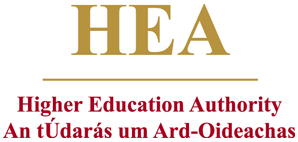Úirchill an Chreagáin (cuid 2) - Máire Ní Arbhasaigh
Recording: [Download audio file]
[Download AIFF audio file (of processed ‘user’ version)]
[Download AIFF audio file (of archive version)]
Transcript
Ó, a théagar is a chuisle, ó, más cinniúinte duit mé mar stór,
Tá tú gan éideadh, gan earradh ach (bearránach) bocht baoth gan
dóigh,
Nach mb'fhearr duit ins na liosa[1] agus mise le do thaobh gach neoin,
Ó, ná saighde clann Bhullaí bheith ag polladh faoi do chliath go deo?
Translation
Oh, my darling and beloved, oh, if it is your fate to be have me as your love,
You are without clothes, without accoutrements, a mere foolish poor rogue (?)
without means,
Wouldn't you be better off in fairy mansions with me by your side every
afternoon,
Oh, than the arrows of the foreign settlers forever piercing your side?
Commentary
Parts 1 and 2 of this recording comprise a version of 'Úirchill an Chreagáin', which is one of the most popular Irish songs to come out of south-east Ulster. It is an example of an aisling ('vision-poem') and was composed by Art Mac Cumhaigh (1738-1773) of the parish of Creggan in south Armagh. According to an oral tradition documented in Liam Ó Conchubhair and Derek Bell, Traditional songs of the north of Ireland (Dublin, 1999), 12, the poet composed the song one afternoon while working as a labourer leading a horse drawing manure up and down Leyther Hill, Glassdrummond, for Rev. Hugh Hill of Mount Hill, near Creggan. The format and structure of the song is one of a poetic conversation between the poet and a spéirbhean ('visionary beautiful woman'). It reflects the hardship Gaelic poets experienced once the Gaelic nobility, upon whose patronage poets had depended for centuries, had been dispossessed. In a detailed discussion of the song, Padraigín Ní Uallacháin documents the local tradition that Mac Cumhaigh composed it while he was sheltering in the burial vault of the O'Neills of Fews in Creggan graveyard towards the end of his life (see Ní Uallacháin, A hidden Ulster: people, songs and traditions of Oriel (Dublin, 2003), 250-8: 254). Mac Cumhaigh's description of the spéirbhean is in keeping with the general characteristics of other eighteenth-century aisling poems. She generally represents Ireland and often heralds the arrival of help from France, Spain, or Bonnie Prince Charlie. But unlike his Munster contemporaries, Mac Cumhaigh does not receive any such message from the spéirbhean but instead he is enchanted by her invitations to abandon his dismal life and accompany her to the idyllic land she describes. Mac Cumhaigh is believed to be buried in Creggan graveyard. The first two verses (i.e. part 1) of this song can be found on a separate track in the Doegen collection. This song is transcribed also in Róise Ní Bhaoill, Ulster Gaelic voices: bailiúchán Doegen 1931 (Belfast, 2010), 320-3. An instrumental version is included on Séamus Ennis's LP The ace and deuce of piping (Collector/Selection Records, 1960).
Title in English: The Churchyard of Creggan (part 2)
Digital version published by: Doegen Records Web Project, Royal Irish Academy
Description of the Recording:
Speaker:
Máire
Ní Arbhasaigh from Co.
Armagh
Person who made the recording:
Karl Tempel
Organizer and administrator of the recording scheme: The Royal Irish Academy
In collaboration with: Lautabteilung, Preußische Staatsbibliothek (now Lautarchiv,
Humboldt-Universität zu Berlin)
Recorded on 25-09-1931 at 17:30:00 in Queen's
University, Belfast. Recorded on 25-09-1931 at 17:30:00 in Queen's
University, Belfast.
Archive recording (ID LA_1224d2, from a shellac disk stored at the
Royal Irish Academy) is 00:45 minutes
long. Archive recording (ID LA_1224d2, from a shellac disk stored at the
Royal Irish Academy) is 00:45 minutes
long.
Second archive recording (ID LA_1224b2, from a shellac disc stored in
Belfast) is 00:45 minutes long. Second archive recording (ID LA_1224b2, from a shellac disc stored in
Belfast) is 00:45 minutes long.
User recording (ID LA_1224d2, from a shellac disk stored at the Royal
Irish Academy) is 00:44 minutes long. User recording (ID LA_1224d2, from a shellac disk stored at the Royal
Irish Academy) is 00:44 minutes long.





